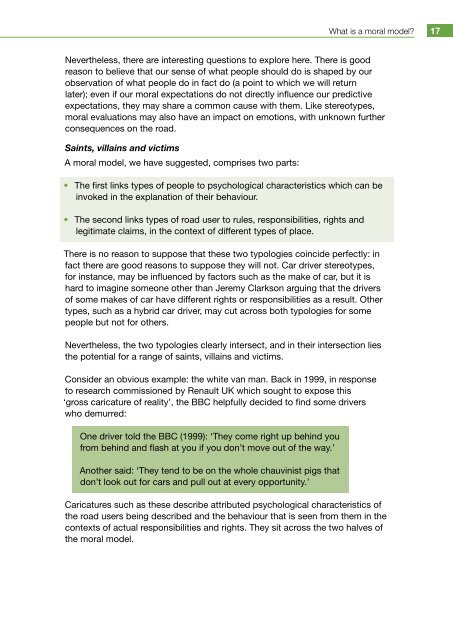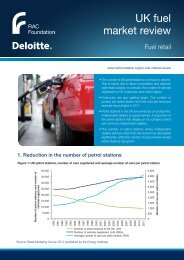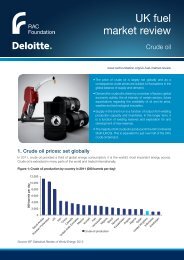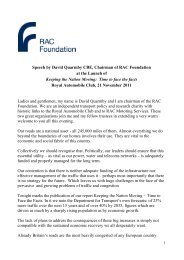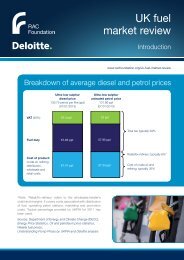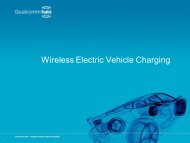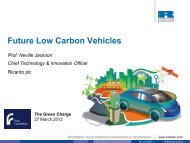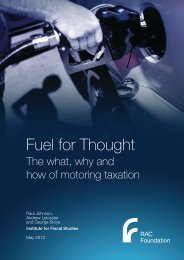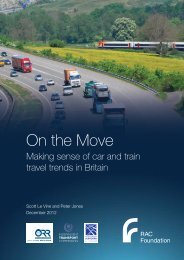Road sharing - does it matter what road users think of each other?
Road sharing - does it matter what road users think of each other?
Road sharing - does it matter what road users think of each other?
You also want an ePaper? Increase the reach of your titles
YUMPU automatically turns print PDFs into web optimized ePapers that Google loves.
What is a moral model?17Nevertheless, there are interesting questions to explore here. There is goodreason to believe that our sense <strong>of</strong> <strong>what</strong> people should do is shaped by ourobservation <strong>of</strong> <strong>what</strong> people do in fact do (a point to which we will returnlater); even if our moral expectations do not directly influence our predictiveexpectations, they may share a common cause w<strong>it</strong>h them. Like stereotypes,moral evaluations may also have an impact on emotions, w<strong>it</strong>h unknown furtherconsequences on the <strong>road</strong>.Saints, villains and victimsA moral model, we have suggested, comprises two parts:• The first links types <strong>of</strong> people to psychological characteristics which can beinvoked in the explanation <strong>of</strong> their behaviour.• The second links types <strong>of</strong> <strong>road</strong> user to rules, responsibil<strong>it</strong>ies, rights andleg<strong>it</strong>imate claims, in the context <strong>of</strong> different types <strong>of</strong> place.There is no reason to suppose that these two typologies coincide perfectly: infact there are good reasons to suppose they will not. Car driver stereotypes,for instance, may be influenced by factors such as the make <strong>of</strong> car, but <strong>it</strong> ishard to imagine someone <strong>other</strong> than Jeremy Clarkson arguing that the drivers<strong>of</strong> some makes <strong>of</strong> car have different rights or responsibil<strong>it</strong>ies as a result. Othertypes, such as a hybrid car driver, may cut across both typologies for somepeople but not for <strong>other</strong>s.Nevertheless, the two typologies clearly intersect, and in their intersection liesthe potential for a range <strong>of</strong> saints, villains and victims.Consider an obvious example: the wh<strong>it</strong>e van man. Back in 1999, in responseto research commissioned by Renault UK which sought to expose this‘gross caricature <strong>of</strong> real<strong>it</strong>y’, the BBC helpfully decided to find some driverswho demurred:One driver told the BBC (1999): ‘They come right up behind youfrom behind and flash at you if you don’t move out <strong>of</strong> the way.’An<strong>other</strong> said: ‘They tend to be on the whole chauvinist pigs thatdon’t look out for cars and pull out at every opportun<strong>it</strong>y.’Caricatures such as these describe attributed psychological characteristics <strong>of</strong>the <strong>road</strong> <strong>users</strong> being described and the behaviour that is seen from them in thecontexts <strong>of</strong> actual responsibil<strong>it</strong>ies and rights. They s<strong>it</strong> across the two halves <strong>of</strong>the moral model.


